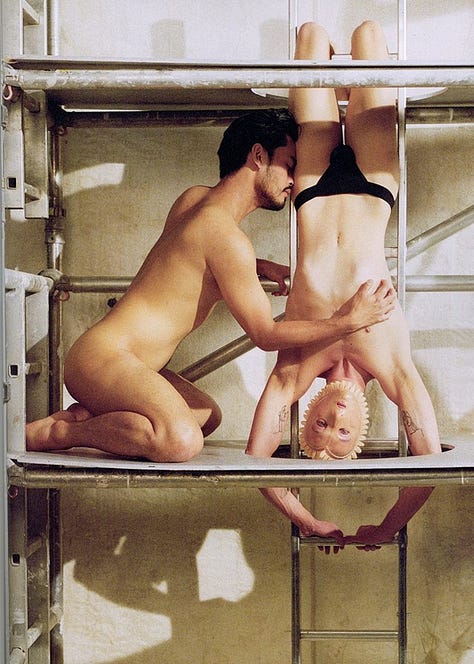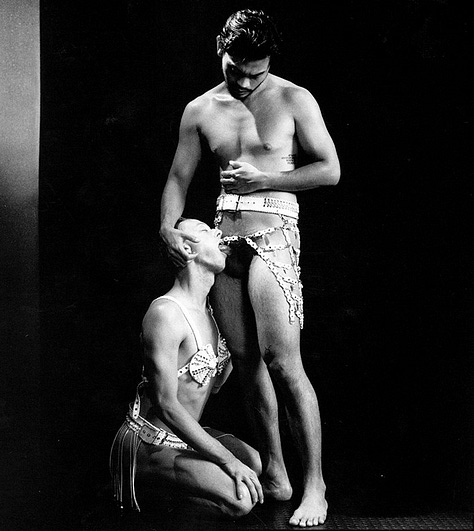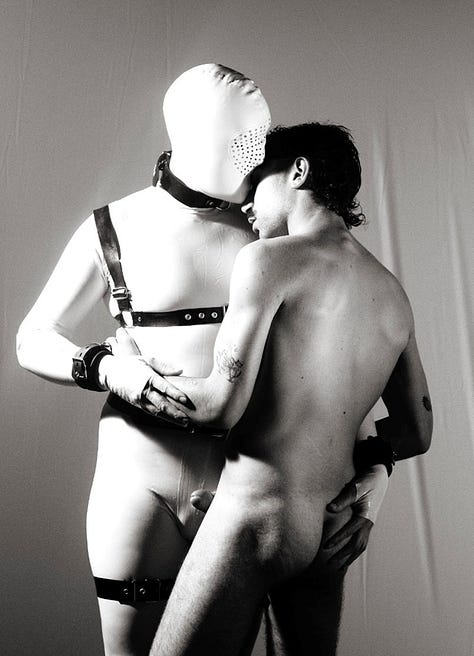Tom Selmon uses erotica to explore the "freaky, creative, sexy" human experience
The photographer, curator and editor of Sensored talks about making an erotic magazine "not limited by gender, sexuality, age or body type".
Welcome to SHAGGERS, an interview series speaking to creative practitioners expanding sexual culture.
Sex isn’t any one thing, and our erotic lives have the potential to be vast, spontaneous and ever-changing. In contrast to this, the ways we discuss and conceptualise sex – even in an age where a seemingly endless supply erotic digital content is available at our fingertips – can veer towards the orthodox and unimaginative.
After all, while the digital revolution promised a space where the freaks of the world could unite together, we’re increasingly met by online censorship and invasive algorithms that are making our desires less and less imaginative. And don’t even get me started on the incoming AI revolution – the constant regurgitation of what has come before, lacking the spark of human creativity.
In light of this, frankly, uninspiring state of affairs, PULP will be introducing an ad-hoc interview format called SHAGGERS; a chance to take a closer work at the creative processes of artists, photographers, curators, writers and erotic creators (and more) who are reshaping the erotic imagination.
First up is Tom Selmon, a photographer and curator as well as the founder of Sensored: an uninhibited, printed erotic project. Tom’s photographic style is fluid, visceral and emotive, curiously challenging norms around gender and sexuality. As an editor, they bring a similarly explorative lens to Sensored and purposefully seek to rethink the stale, derivative ways we think of desire in the digital age.
Keep reading for a conversation spanning Tom’s first sex party explorations, the Facebook faux-pas that foreshadowed a daring approach to artistic expression, and the growing IRL community around Sensored.



Nice to meet you! To begin, would you be able to talk through your experience as a photographer and artist?
My experience as a photographer has definitely been one that has taken a relentless determination, and still does (like many artists). I had no industry connections and found it challenging to communicate the ideas I had to publications, I found it easier to speak with the completed image. Therefore my journey as a photographer has been very self-motivated.
A lot of the work I do comes from personal projects and the people I meet, or is street cast, like the images I shot for a year on the London drag scene between 2014 and 2015 (which will eventually be put into a physical form). I’m always open and curious to be in spaces to hold up my lens to, my mood boards are very light and mainly sit in my head. I use getting around London as a way to develop ideas: observing people, jotting ideas down in my notes. One of the reasons I made Sensored was a way to put an idea out there without needing permission or the green light from someone else.
When did you begin exploring the erotic in your work?
There were two themes I instantly started exploring when I first picked up my camera, and that was gender and the erotic. The erotic side of my work I believe comes from my own sense of heightened sexuality and my love for the bizarre. I was at Torture Garden the first chance I could get, aged 18. It's an aesthetic my eyes get drawn to. I enjoy the rawness, movement and authenticity that can come out of an erotic or nude image. These are just things my emotional side gets excited by and gets inspired to make work from. That being said, I also adore street and documentary photography for the same reasons of that raw, unfiltered look into the emotion of the human experience.
And how would you describe your photographic approach?
I am a reactor photographer, I go into a shoot with an idea, and some references, but the magic happens from my collaboration with my models and the surprises they take me on for the image to emerge. I stage the scene and have a concept to work with, but ultimately I let movement and spontaneity of my models guide my lens. For example I took a studio setup to a model’s home, just with the intention of shooting some nudes. As the shoot went on I looked around the bedroom and asked if there's any props they wanted to introduce. He suggested a slinky, which he then put his hard dick into. Then the baton was passed to me, when it came to how to capture this moment. I generally prefer if my work doesn't solely come from me. I like the image more because the idea is not completely mine, so how can I grow tired of it? I accept that this was a moment that I simply reacted to, observed and that I tried to make it look its most sensitive and beautiful.
“I was at Torture Garden the first chance I could get, aged 18”
Who are some of your biggest creative inspirations?
I hold very close to my heart the impact of cinema, as well as what certain movies or film directors have made me feel. The list could go on and on but Hedwig and the Angry Inch and Shortbus, both by John Cameron Mitchell, were two films I watched in my teens that were extremely impactful for me. These films also depicted a fluidity of gender and sexuality that really resonated with how I felt and were definitely a source of inspiration to project this in my own art. I remember uploading a link to a full-frontal, nude, self-portrait in drag on Facebook, with no concept in my mind that this would be shocking to people. I just thought it was beautiful.
My earliest memory of a film impacting me heavily was watching Cry Baby by John Waters at, honestly, around 6 years old. I had a rogue aunty who recognised I loved this film and would ask if I wanted to watch it when I went round to hers. I remember Hatchet Face would make me feel nauseous and emotional in a way I enjoyed. It was my first memory of having a physical reaction to faces, beauty and bizarre scenes.
I also remember discovering a blog around 2010 called Homotography, which completely rocked my world. This was at a time when we weren’t being fed images left, right, and centre online and I remember really digging deep into the work that was on there. This planted a language of homoerotic photos in my mind. I remember seeing the works of photographers like Steven Klein and really resonating with the freedom in the styling, how it wasn’t limited by gender and was then looked at through an erotic lens.
One more image that I hold close to my heart, was seeing Annie Leibovitz's photo of two men doing ballet on the beach when I was around 16. This was a penny drop moment.
“I remember uploading a link to a full-frontal nude, self-portrait in drag on Facebook, with no concept in my mind that this would be shocking to people.”
I notice you often work in black and white — what about monochrome appeals to you?
I use black and white when I want the emotion of the face or body to be the central focus of where the eyes get drawn to. I find it penetrating, which appeals to me. Having said that, I also thoroughly enjoy the accents of colour imagery, how they make your eyes dance. I have a fetish for mixing black and white and colour photography.
Let’s talk about Sensored, the erotic magazine you began during lockdown and which has recently released its third edition. How does the project respond to mainstream depictions of sensuality and eroticism?
Sensored reacts by saying, ‘HEY! This exists too! And it's beautiful, wonderful, freaky, creative, sexy and deserves to be seen’. If the only source of information about sexuality came from mainstream media, then we would only experience either a heteronormative, shameful, toxic or easily digestible view on sex. I see it as one of Sensored's duties to showcase the fluidity of the human sexual experience with no filters, shame, censorship or judgement.
Why was it important to you to represent a wider range of bodies via Sensored?
Sensored is about the human experience through erotica, and that involves everyone. When I first set out with Sensored 01, I wanted to make an erotic magazine that is not limited by gender, sexuality, age or body type. It was important to me that anyone could pick it up and feel welcomed, rather than excluded.
“I see it as one of Sensored's duties to showcase the fluidity of the human sexual experience with no filters, shame, censorship or judgement.”
What sort of community has grown around Sensored?
Sensored has been building a growing fanbase, people showing up at our markets and pop-ups, creating a real-life community around the magazine. Seeing people come together in physical spaces has been amazing, giving me a chance to meet readers and have real conversations about all things queer and erotic.
For Issue 03, we had our launch party in collaboration with Lover Management at the iconic sex shop Eros Movieland, featuring a talk with Ajamu X and performances from Electric Adam and Charlie Jimenez. It was cool to see a community forming around Sensored, bringing conversation and performance art into the physical space.
Lastly, how can we support Sensored?
Spread the word, follow us, come to our pop ups and events, and if possible, purchase the magazine and prints.







